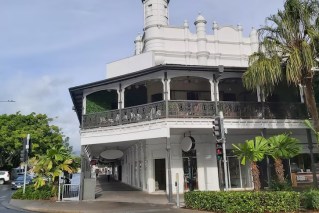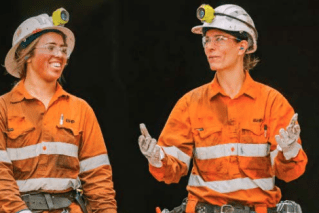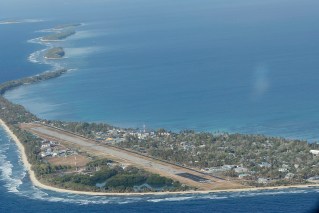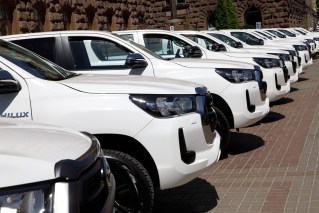Motherlode: Big spending budget digs up record $12.3b surplus from coal royalties
Queenslanders are being showered with electricity bill relief, free kindy and a raft of other cost of living measures as soaring coal royalties powered the state budget to a historic surplus.
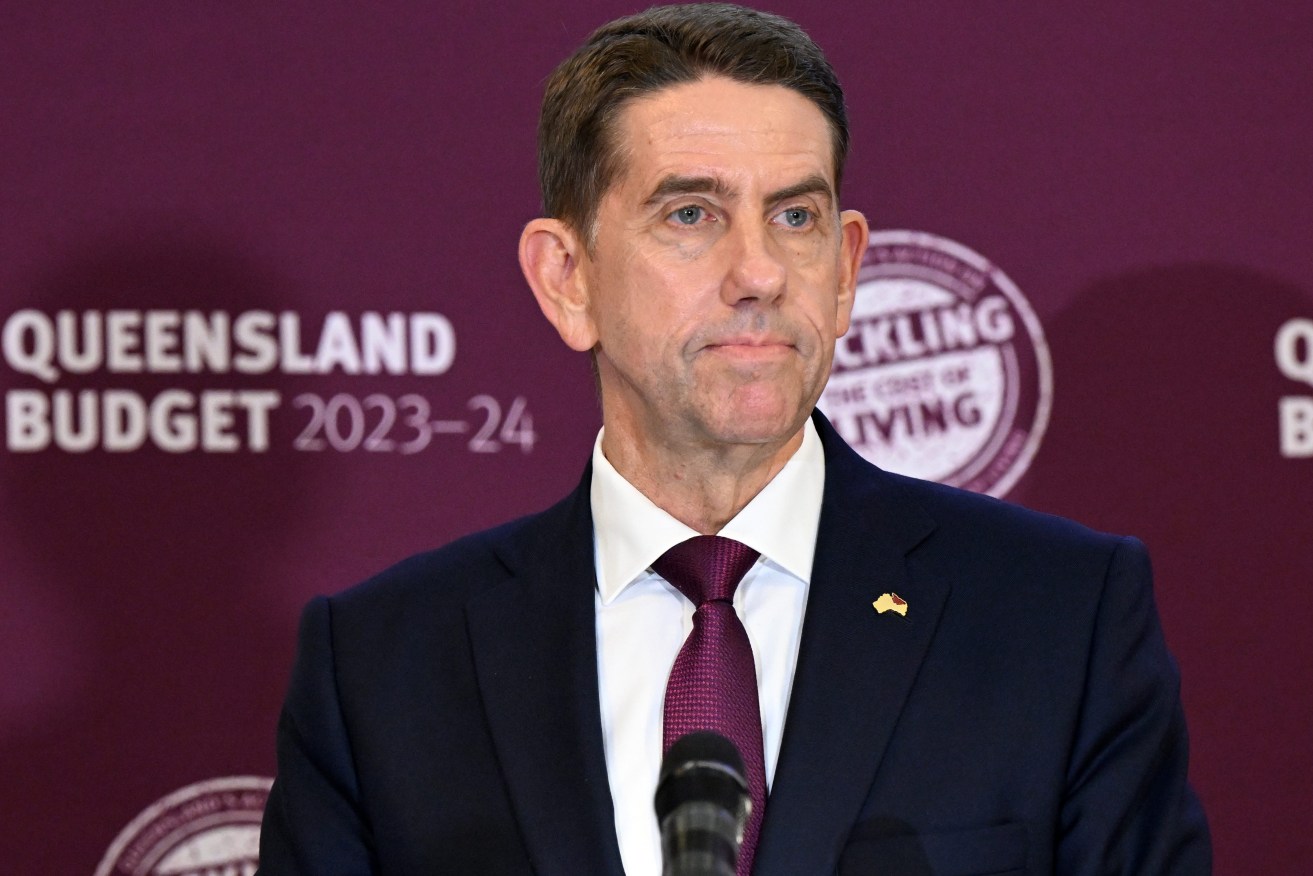
Treasurer Cameron Dick briefing the media inside the budget lock up before the handing down of the 2023-24 Queensland state budget. (AAP Image/Darren England)
Treasurer Cameron Dick said the $12.3 billion surplus for 2022/23 was the largest ever for any state or territory, while declaring “help is on the way” for people struggling with rising inflation and interest rates.
“In this budget, our government will deliver greater and more widespread cost-of-living relief than any other government in Australia, state or federal,” he said as he handed down the budget on Tuesday.
Dick said the largesse was possible thanks to the government’s progressive royalties regime introduced last year, which brought in an extra $10.5b amid high coal and gas prices.
“We can deliver our state’s biggest cost of living program, our state’s biggest building program and deliver lower debt because of one simple reason – progressive coal royalties,” the treasurer said.
“Our decision, to take on the mining lobby, to stand our ground, and to fight for the people of our state, has delivered a rich reward for Queenslanders.”
Dick announced $1.6b in new and expanded cost of living relief, including an increase in the electricity bill rebate to $550 for all households – up from $175 – and more than $1000 for eligible concession holders.
He said the rebates meant low-income households, such as pensioners, might pay nothing for electricity in the next financial year.
The other big-ticket item was $645m over four years to provide 15 hours a week of free kindergarten for all four-year-olds.
“Over the course of a year, that means an average saving of $4600 for many Queensland families,” Dick said.
With the government under pressure over the state’s health system, the treasurer announced a boost of more than nine per cent to bring 2023/24’s funding to $25.8b.
The money includes more than $764m to reduce ambulance ramping and emergency department wait times.
A $1.1b increase for social housing as the state continues to deal with a shortage of affordable housing, including $322m for an additional 500 social homes.
Dick touted the state’s infrastructure spending which is forecast to be $89 billion over four years, including including $20b in 2023/24 new and ongoing projects including infrastructure for the 2032 Olympics,the Fitzroy to Gladstone water pipeline, the Borumba Pumped Hydro project, and Stage 1 of the Coomera Connector motorway.
The royalties bonanza is not expected to continue and revenue is forecast to fall sharply in 2023/24, as the temporary surge in coal and other commodity prices unwinds, according to the budget papers.
This will result in a forecast deficit of $2b in 2023/24.
Queensland’s economy is forecast to grow two per cent in 2022/23 then increase to three per cent over the next two years.
Inflation is expected to drop from 7.25 per cent in 2022/23 to 3.75 per cent in 2023/24, while unemployment is expected to edge higher to 4.25 per cent in 2023/24.
The state’s population is forecast to increase two per cent in 2022/23, then increase 1.75 per cent in 2023/24.
BUDGET AT A GLANCE
$12.3b surplus expected in 2022/23, the largest of any state or territory, followed by a $2.1b deficit in 2023/24
$10.5b increase in resource royalties to $18.1b in 2022/23
Net debt: $5.85b in 2022/23, rising to $16.19b in 2023/24
Debt including government-owned assets: $54.6b in 2022/23, rising to $65.4b in 2023/24
COST OF LIVING
* $8.2b in concessions including $1.6b in new and expanded cost of living relief
* $1.5b for additional electricity bill support for households and small businesses
– $550 electricity bill rebate for all households
– $700 electricity rebate for eligible concession holders, as well as the existing $372 power rebate
– $650 rebate for eligible small businesses
– $645m over four years to provide 15 hours a week of free kindergarten for all four-year-olds
– $70.3m over four years for the Patient Travel Subsidy Scheme
– $2.7m over two years for expanded school breakfast program
HEALTH
* $25.8b for health, a 9.6 per cent increase
– Funding towards hospital construction program, including in Cairns, Townsville, Mackay, Bundaberg, Hervey Bay, Toowoomba and in southeast Queensland
– $764m to address ambulance ramping and emergency department wait times
– $72m for 200 paramedics
HOUSING
* $1.1 billion increase for social housing
– $322m to provide 500 additional social homes
– additional $250m for housing and homelessness support services
COMMUNITY SAFETY
* $440m over four years for police and to combat the causes of youth crime and support community safety
– $96m for Youth Co-responder Teams aiming to break the cycle of youth crime
– $30 million in funding to enable seniors to be more secure in their homes
– $58m over four years to implement the Domestic, Family and Sexual Violence review
CAPITAL SPENDING
* $89b capital building program over four years, including $20b in 2023/24 new and ongoing projects including
– Fitzroy to Gladstone water pipeline
– 2032 Olympics infrastructure including the Gabba redevelopment
– Borumba Pumped Hydro and Pioneer-Burdekin Hydro projects
– CopperString 2032 electricity transmission line from Townsville to Mt Isa
– Stage 1 of the Coomera Connector
– Stage 3 of the Gold Coast Light Rail
ECONOMY
* After 4.4 per cent growth in 2021/22, Queensland’s economy forecast to grow two per cent in 2022/23 then three per cent in 2023/24 and 2024/25
* Unemployment rate to edge higher to 4.25 per cent in 2023/24 and 4.25 per cent in 2024/25
* Inflation to drop from 7.25 per cent in 2022/23 to 3.75 per cent in 2023/24 and to three per cent in 2024/25
* Population forecast to increase two per cent in 2022/23, then increase 1.75 per cent in 2023/24 and 1.5 per cent in 2024/25


